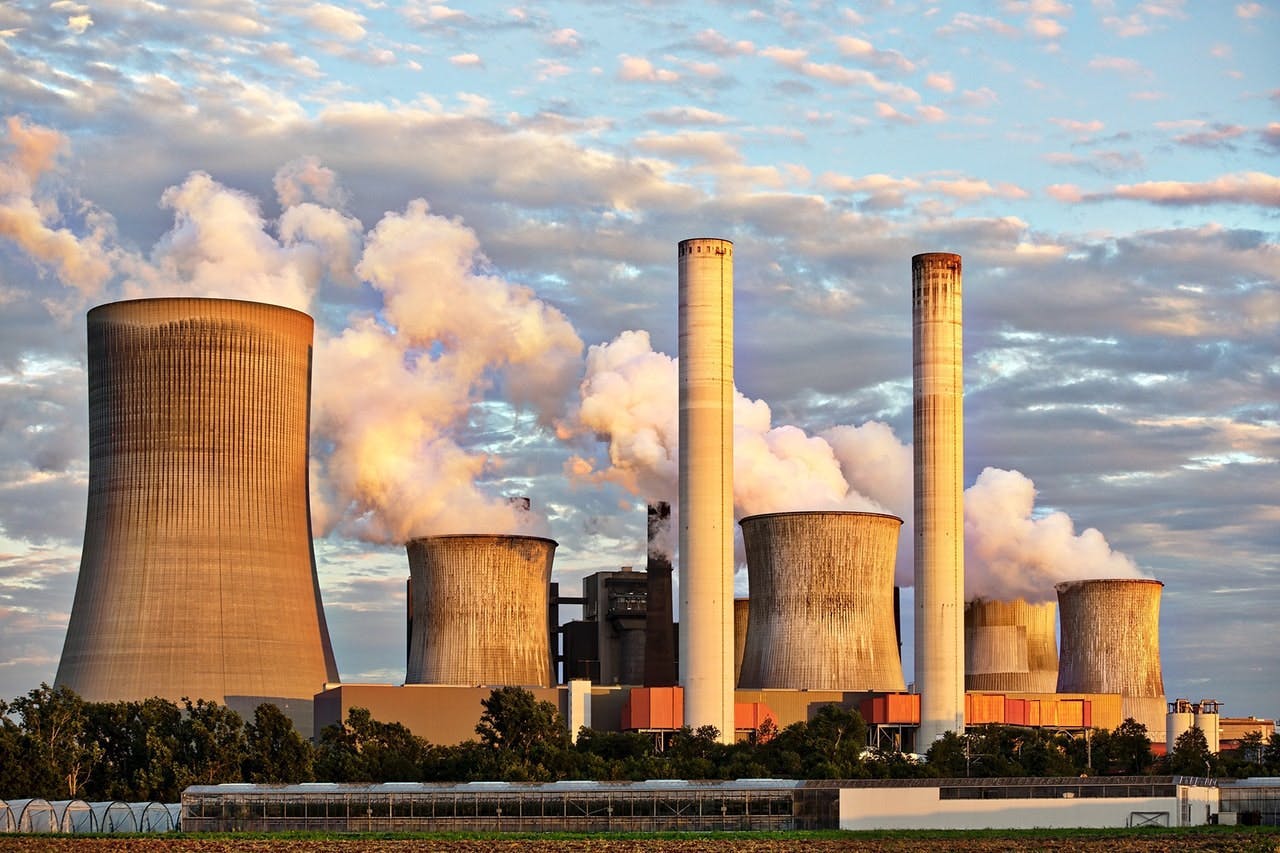CO2 Out Of Sight, Not Out Of Mind
As the CO2 concentration in the atmosphere peaked in 2016, limiting the global temperature increase to only 2 degrees might become unattainable. Although the energy transition is well under way, phasing out fossil fuels might take many decades due to the growing energy demand worldwide [1]. The good news is, there might be a surprising solution which lies where the fossil fuels come from – deep underground. Carbon Capture and Storage (CCS) technology can deliver 12% of the cumulative reduction of emissions required by 2050. However, there are only 16 large-scale projects currently in operation and the governments are still to address multiple gaps in the regulatory frameworks across the world. One of the stumbling blocks is the widespread perception that this new technology comes with the risks that are just too high and hence does not deserve to be developed further. But how objective are we about the risks involved?
"For most people, the ill-effects seem too distant for climate change to meaningfully impact their behavior."
The climate on our planet that allowed our civilization to flourish is a classic example of a public good: everyone enjoys it irrespective of whether they spend their money and effort to maintain it. This affects our decision-making, because it gives rise to a free rider problem. That is, people are not necessarily willing (or able) to pay their fair share to incur the costs of maintenance. Moreover, change in the climate can barely be noticed within one generation. Thus, for most people, the ill-effects seem too distant for climate change to meaningfully impact their behavior. This is why it is so important that we all recognize the problem and look for solutions together. In the case of CCS, the negotiations with governments and the public have proven very difficult.
First, let’s look at how CCS works. This technology allows to do exactly what the name says: capture, transport (if required) and securely store CO2, usually several kilometers underground, at a suitable location chosen by geologists. The gas is then pumped into a reservoir with an impenetrable cap rock – often the same reservoir that was keeping the oil and gas in place for millions of years. As of now, this is the only proven technology that can be used on a global scale to reduce emissions. There is no doubt that the transition to renewables and the search for technologies that deliver higher energy efficiency should continue, but there are many production processes where fossil fuels cannot be substituted yet, such as production of steel, iron and cement, to name a few. CCS can be an important “interim” technology capturing these CO2 emissions until we find out how to produce these materials in a cleaner way.
Like any technology, it comes with risks, the main one being a CO2 leakage. An abrupt leakage might be dangerous for the local community, because high concentrations of CO2 pose health risks. Research shows that the probability of such an event is extremely small and it is very unlikely to cause harm to people or local flora and fauna [2]. Nonetheless, the technology is still perceived as unacceptably risky by many, which might stem from the behavioral biases we possess.
Studies have shown that people are prone to omission bias [3]: that is, they favor inaction allowing harm to be done instead of an action that might cause harm. Baron (1986) notes that “omission bias seems to arise from a basic view that what is to be avoided is the direct causation of harm” [4]. He demonstrated this effect in parents’ decision to vaccinate children: many opt out thinking that vaccination itself poses risks for the child and hence they do not want to potentially cause harm by their actions, even though statistically the advantages of vaccination far outweigh the risks. CCS is perceived in a similar way. With respect to this technology, we seem to have two options:
build a CCS and take on the (however small) risk of potential leakage
OR
do not build anything and face the consequences of climate change.
The latter prospect seems far from ideal, but the public might favor it simply because they want to avoid causing any harm at any cost. The fact that environment is a public good aggravates this perception, because the initiatives to reduce CO2 emissions might not benefit directly to the country or community introducing them and will be effective only if implemented on a global scale. In a way, this is similar to the prisoner’s dilemma, because cooperation of all the countries and communities is not guaranteed, so each one of them is inclined not to take the risk of adopting CCS on their own. That is why using a technology that implies that potential risks are localized but the benefits are shared requires us to recognize this bias and coordinate our effort globally.
Another problem is that people prefer to focus on reducing a smaller risk to zero rather than significantly reducing a bigger risk. This is known as zero risk bias. For CCS, this means that communities and politicians would oppose building a CCS facility (i.e. reducing the risk of leakage to zero) rather than contribute to a reduction of a greater risk of global warming. In this case it is important to frame the options clearly and do an objective assessment of all the risks involved. On the one hand, we have a risk of CO2 leakage. The estimated probability of this happening is miniscule [5] and is very unlikely to cause harm to living organisms. On the other hand, if CO2 emissions are not curbed, climate change will certainly worsen.
Behavioral Science, Democratized
We make 35,000 decisions each day, often in environments that aren’t conducive to making sound choices.
At TDL, we work with organizations in the public and private sectors—from new startups, to governments, to established players like the Gates Foundation—to debias decision-making and create better outcomes for everyone.
The AI Governance Challenge
It is also worth mentioning that people usually prefer to reduce man-made hazards rather than similar hazards coming from natural phenomena. In their research on public opinion on cleaning up hazardous waste, Baron et al (1993) [7] found: “A few subjects think that human-caused waste is more important to clean up than otherwise identical natural chemicals”. CCS is a similar case: the deposits of CO2 can be found in many places on the planet, but they never spark discussions about their hazards. Nevertheless, natural CO2 deposits might be much more dangerous than man-made CCS because their locations have not been specifically chosen by geologists, so the cap rock might not be strong enough to prevent the gas from leaking. This is a perfect example of naturalistic fallacy – the tendency for people to view a phenomenon that occurs naturally as more positive compared to a similar man-made phenomenon – which in this case complements and intensifies the zero risk bias.
CCS certainly has its risks, so technical studies and tests should still be done and advanced regulatory frameworks should be developed to ensure this technology can be employed safely. For example, we could start by storing CO2 in the remote areas where potential leaks would not affect anyone until we gather enough data. CCS does not claim to be the ultimate solution that would stop climate change once and for all, but it seems to be the necessary stepping stone to a net zero emission world. Meanwhile, scientists are working on some amazing technologies for the longer term — such as turning CO2 into stone. But it will take us decades of research before we are able to use those on the required scale. So, for now, it is important to take stock of the technological ability we do have, and ensure we check our biases in making objective decisions that are best for the planet.
References
[1] Paltsev S. (2016). Energy Scenarios: The Value and Limits of Scenario Analysis. Massachusetts Institute of Technology, Cambridge, MA, USA
[2] Lilliestam, J., Bielicki, J., Patt, A. (2012). Comparing carbon capture and storage (CCS) with concentrating solar power (CSP): potentials, costs, risks, and barriers. Energy Policy 47, pp. 447-455
[3] Baron J., Ritov I. (2004). Omission bias, individual differences, and normality. Organizational Behavior and Human Decision Processes, 94, 74–85
[4] Baron, J. (1986). Tradeoffs among reasons for action. Journal for the Theory of Social Behavior, 16, 173–195
[5] Anderson S. (2017). Risk, Liability, and Economic Issues with Long-Term CO2 Storage—A Review Natural Resources Research, 26, 89–112
[6] Baron J. et al (1993). Attitudes toward managing hazardous waste: What should be cleaned up and who should pay for it? Risk Analysis, 13, 183-192.
About the Author
Anastasia Gavrilova
Anastasia is currently working as a Finance Analyst in the energy sector. She focuses on improving process efficiency and reducing costs. Her previous experience includes working as a management consultant, where she delivered various strategy and process improvement projects in the energy industry in Russia and Kazakhstan. Anastasia holds the BSc degree in Economics from the Higher School of Economics, Moscow, and an MSc in Business Strategy from the University of Amsterdam. She strives to combine her industry experience with behavioral economics insights to analyze how governments, companies, and consumers can enable the transition to sustainable energy.





